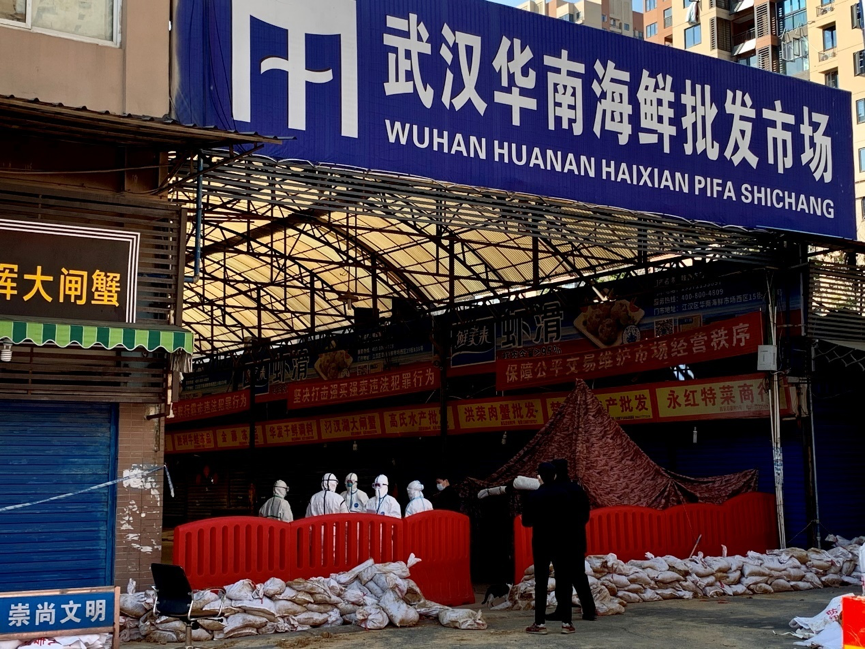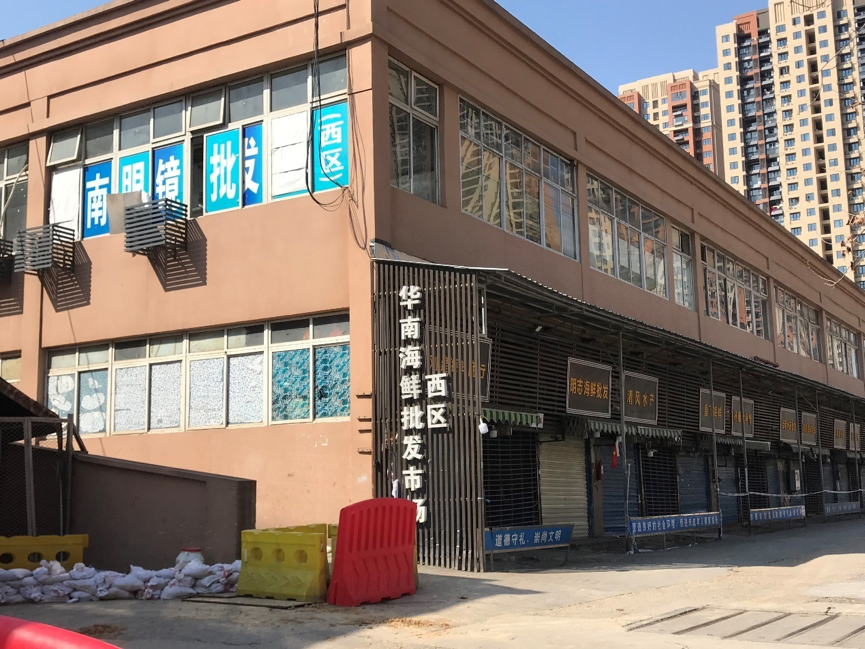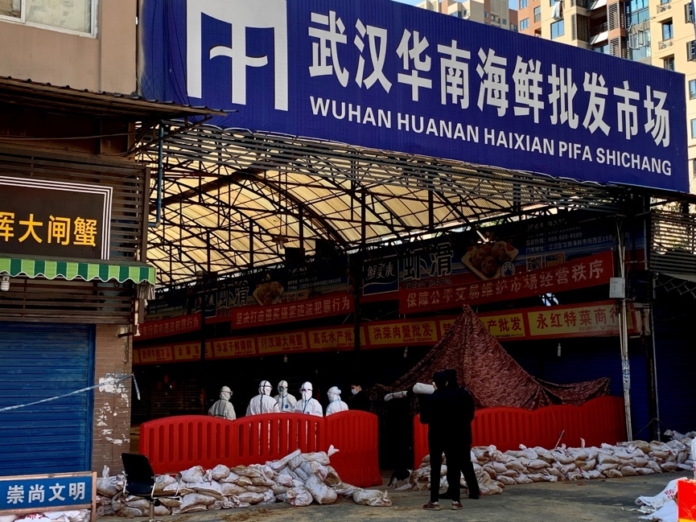Wuhan South China Seafood Wholesale Market, from the market full of people to the fear that everyone would avoid, it just took less than two months.

Although it is named as “South China”, it’s the largest seafood market in Central China and the distribution center of Jiangcheng Catering Industry, in addition to wholesale supply to various restaurants and restaurants, some companies will also come here to buy for group dinner.
Since the first day of 2020, after the South China Seafood Market was closed for rectification, except for professional disinfection four times a day, there were few people visible here at all other times. All entrances were blocked. Only two security guards were stationed to take care of the supplies, Unauthorized persons are prohibited from entering.

At 2 pm on February 20, a dozen people wearing protective clothing and carrying test boxes entered the market from Fifteenth Street, West District. “They are here to draw samples.” Security said these people came from the epidemic prevention department, the Chinese Academy of Sciences and the Wuhan Public Security Bureau. The police are responsible for taking pictures in the shops and have been here many times before. The shutter door occasionally made a harsh noise, echoing in the empty block.
This wholesale market, covering an area of 50,000 square meters, is less than one kilometer from Hankou Railway Station. In addition to various seafood, there are also a large number of wildlife trading shops. The owner of Mingzhi Seafood Wholesale in West District Yijie was asked to participate in the investigation. On January 21, the “phased progress” of virus traceability was pushed to his mobile phone through the app-China Disease Control Center Virus Disease Center Close to the market, the largest number of positive specimens were extracted, and it was quickly suspected that the epidemic was related to the wildlife trade.

“Science” magazine believes that the South China seafood market may not be the only epidemic source, because of the first 41 confirmed cases, 13 have no South China seafood markets contact history.
On February 22, a study by the Xishuangbanna Tropical Botanical Garden of the Chinese Academy of Sciences confirmed this hypothesis again. The conclusion of the study is that some carriers may have infected people who went to the South China Seafood Market. As a result, the crowded market became a virus spreading outbreak.
After the market was closed, the South China Seafood Market once organized merchants to cancel rents on site. Yong Hu(pseudonym), the owner of the hairy crab attached to No. 5 Hou Street, West District, received the market notification and requested to take the original business license, ID card, and bank card to the market office to receive a 10,000 yuan subsidy.
Suddenly the rest of the market changed his trajectory of life throughout the year, and the economic sources on which the family relied were in crisis. Hu’s child is in college and he hired five workers, each with a minimum wage of more than 5,000 yuan. In the past, excluding expenses, he also earned thousands of yuan per month. Now the deficit is tens of thousands per month.
During the period of “closing the city”, he can only stay at home. He has no hope for a resumption of the South China Seafood Market. “Compared to the capital chain that quickly broken in two or three months, Hu worried about losing customers most. If I’m going to work in this industry again in the future, I’m afraid that I have lost my position. “

